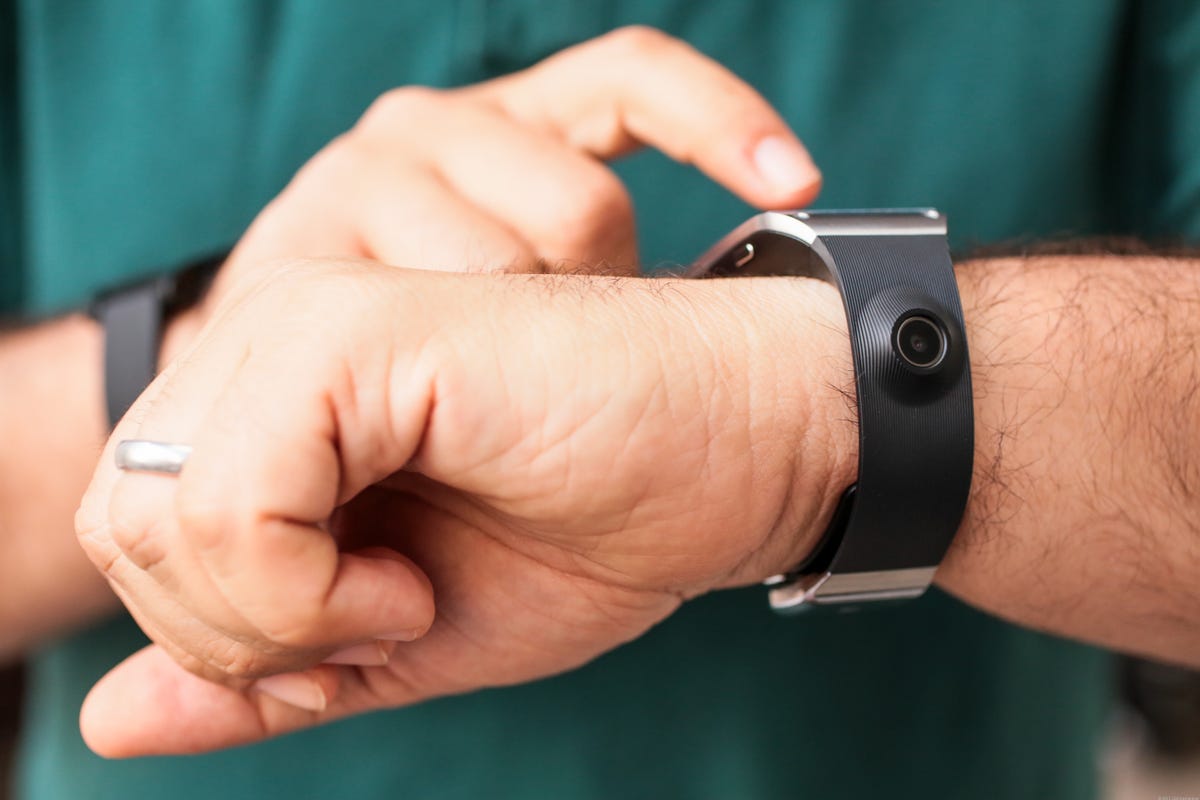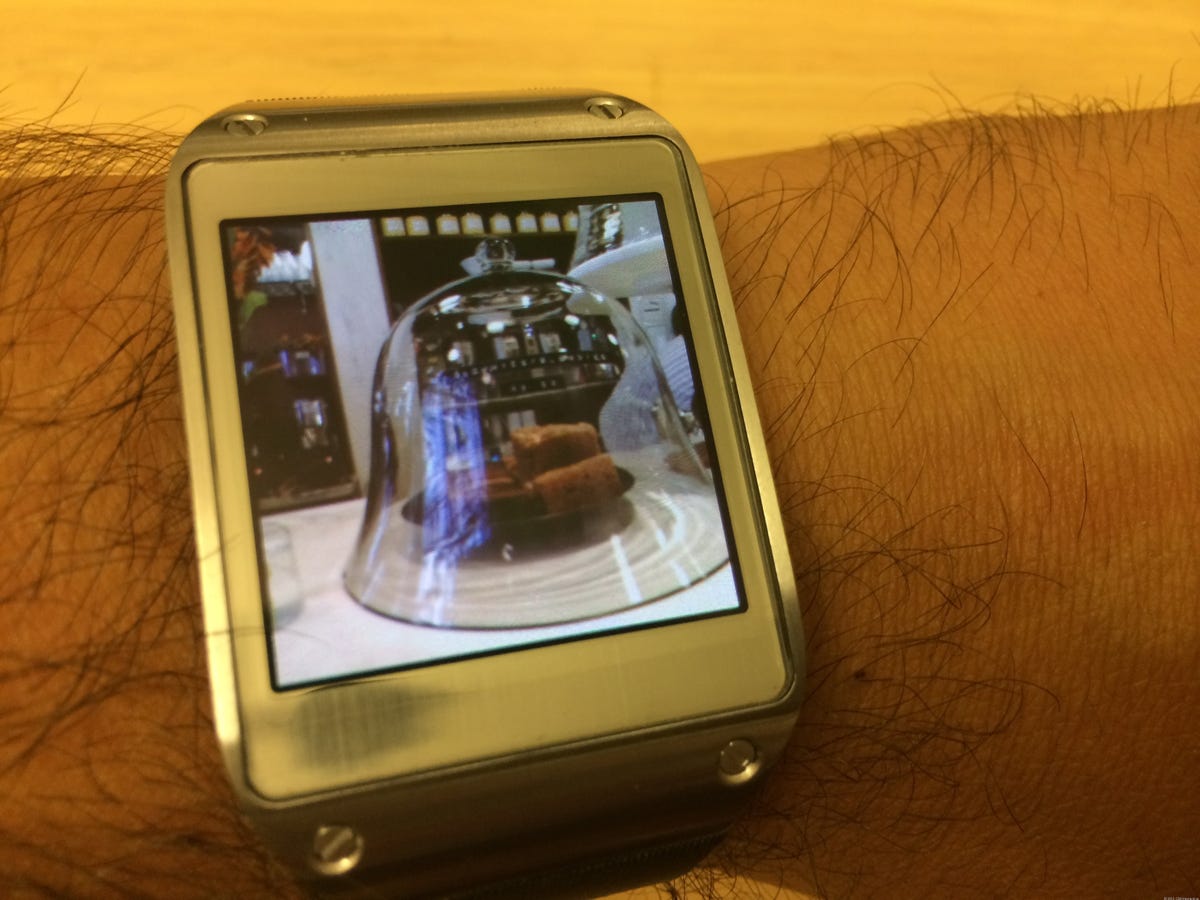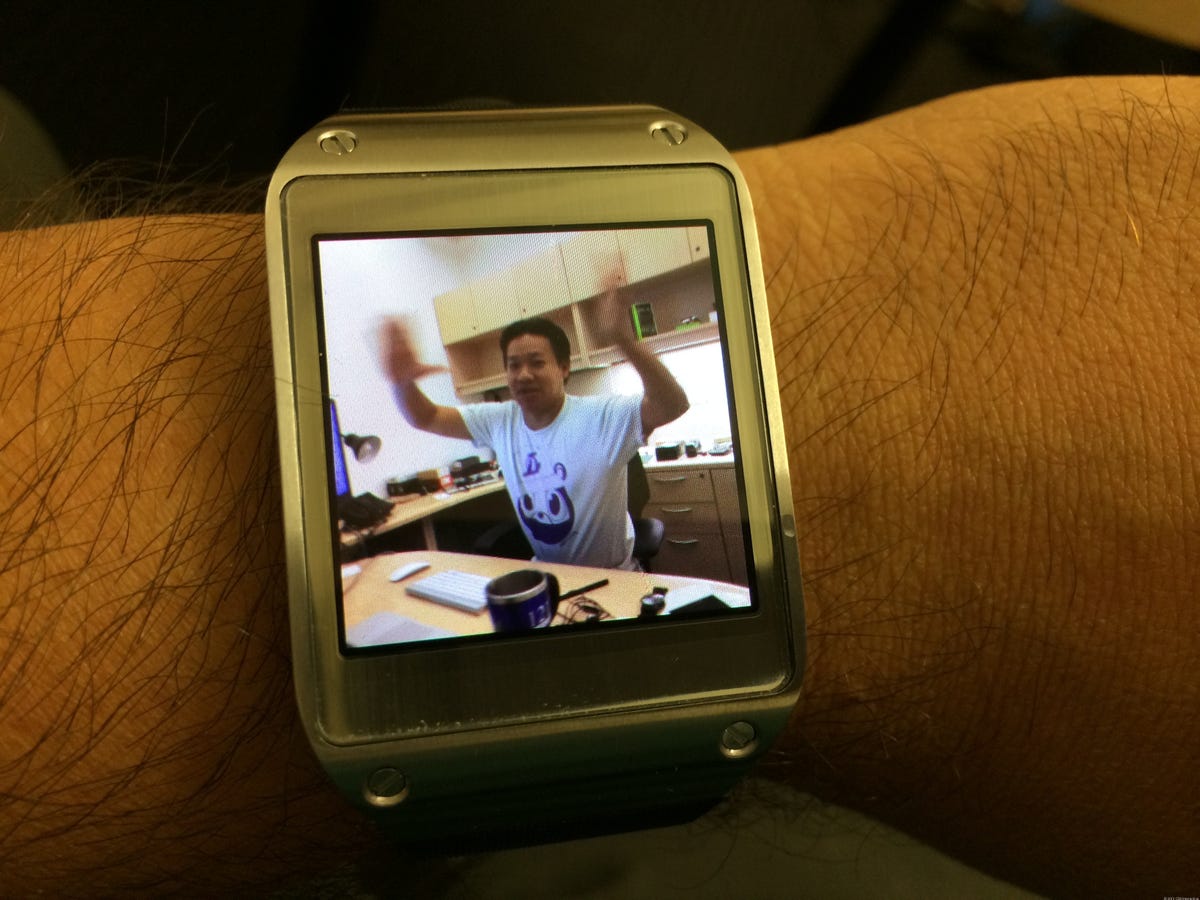“Excuse me. I just wanted to ask: did you know I was taking a picture of you with my watch?”
This is what I asked a barista at a coffee shop near work, because, moments before, that’s exactly what I did. Wearing a black-and-steel Samsung Galaxy Gear on my wrist, I made a few swipes and taps on the screen that captured my subject as he was making me coffee.
“No, but I heard the sound of a camera phone snapping.”
He was referring to the beep-and-snap sound effect that comes through quite loudly on the Gear, Samsung’s new smartwatch that goes on sale in the US on October 4. It can’t be deactivated. This seems like a good idea, since I was otherwise able to subtly snap pics quite easily. Did this make me feel creepy? A bit like a spy? Yes, it did.


Sarah Tew/CNET


Scott Stein/CNET
What does it mean to have a camera on your watch? Why even have one? I tried using a Gear watch as a standalone device, no Note 3 nearby, just as a camera, and see what I could use it for. It’s a good camera for a watch — better than you’d think (1.9 megapixels, with 4GB of onboard storage) — but most people would pick their phone over the Gear any day. It’s also not particularly fast. I attempted to surreptitiously swipe open the camera app and tap on the smartwatch’s screen to snap a photo, and the whole process took at least 4 seconds. Just the time between tap and snap seemed to take about a second. The lens does a great job of giving a sharp picture when holding your wrist to normal holding-a-cup-of-coffee height. It’s well-placed and not that awkward, when you’re looking through the watch’s viewfinder screen. But to get to that point, you either have to commit to watch-camera photography, or find a way of misdirecting attention to take your pictures on the sly. Either one feels weird, and a little upsetting.
I’m making a big deal out of the Gear’s camera because, well, it is a big deal. Of all the smartwatches CNET has covered thus far, no other has an embedded camera. It’s usually the domain of headgear. It seems somewhat insane that the Gear even has a camera at all, but there are some logical future uses: scanning bar codes or QR codes in stores, or taking quick visual memos that can be tied to events to remind you later.
Every other feature the Gear has so far — health tracker, notifications, music and media control, voice command, and speakerphone — can be found elsewhere. The camera is the “new thing.” And, in a sense, Gear and Glass have some things in common. Both are trying to introduce cameras into new places, both are positioning themselves as helpful, always-listening devices you can speak to, and both are trying to knit lots of brand-name apps into the wearable experience.


Scott Stein/CNET
I might find myself wearing the Gear more often than Glass, simply because it feels natural as a watch, and starts to become invisible the moment I slip it on. But that invisibility becomes something a little more threatening with a camera.
Snaps aren’t the only thing the Gear can take: it can record 15-second video clips, too. And those can be triggered in advance, running silently. Capturing perfect undercover footage from my wrist that doesn’t look like bad roller-coaster outtakes isn’t easy, but it can be done. And what does that mean?
It means cameras will be everywhere. They already are everywhere. I can sneak a picture on my phone pretty easily. Not so long ago, people found cameras on phones to be surprising and odd. Today watches, tomorrow little clip-ons. I don’t like cameras on everything, and I don’t like the lack of privacy, but what Gear shows even more than Glass is how easily cameras will slide into the world around us. Maybe this is just the beginning of something commonplace, but right now — as long as people don’t think cameras will be on watches — it’s a recipe for social weirdness.



